by cidaut | Oct 22, 2019 | Sin categoría

The international Symposium on Impact Engineering, ISIE 2019, aims to establish a professional dialogue between cultures, scientists and industry engineers on the field of experimental and computational mechanism with focus on impact and other dynamic problems.
The 2019 edition was hold in Gmunden in Upper Austria on 2-5th July 2019, the location offers a relaxed atmosphere, a beautiful environment, and a high-class service for the conference. Cidaut was there as Coordinator of Steel S4 EV project, presenting the preliminary results obtained in this project funded by the European Commission in the frame of the H2020 initiative. The presentation was focused on the crash results taking advantage of the participants’ expertize in impact engineering, mainly coming from Asia and Europe, but also with representative from America. The advances on the vehicle structure design and the evolution of the crash behavior from the starting of the project to the nowadays situation was presented.
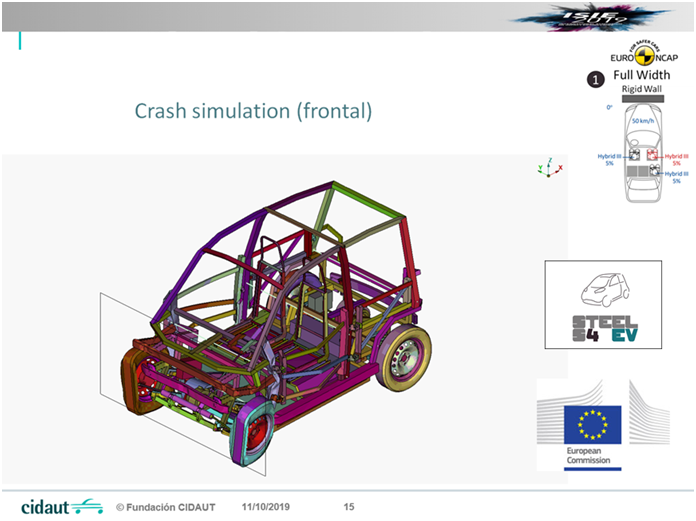
The project has covered the first year out of three, its main target is putting high strength steels at the forefront of a new trend in electric vehicles: light vehicles with three or four wheels that comply with crash regulation and with more restrictive Euro NCAP demands. Weld joint design and welding methodologies research to maintain the material properties in the weld area, assuring the robustness and long term durability.
Cost effective low-investment manufacturing will be achieved by a modular and flexible structural design: a complex 3D skeleton frame of welded tubes, bent with high accuracy using programmed laser cuts will enable the production of different vehicles sharing the same tooling.
by cidaut | May 17, 2019 | Sin categoría
On April 10 and 11, the 7th GASNAM congress was held in La Nave (Madrid), under the slogan “Renewable gas: innovation for sustainable mobility”. The congress had more than 50 national and international speakers, more than 30 tables of work, lectures and the largest exhibition of natural and renewable gas vehicles in Europe.
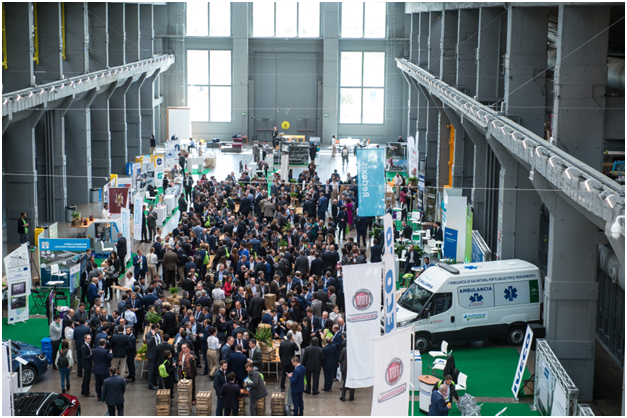
During this congress, CIDAUT has presented an innovative adsorbed natural gas (ANG) storage system that has been implemented in a dual-fuel van, as a pilot test within ECO-GATE project.
The storage of adsorbed natural gas (ANG) allows storing more energy per unit volume at the same pressure as the storage of compressed natural gas (CNG). This innovation allows the use of tanks that work at lower pressure (60 bar), with the advantages that this entails: greater flexibility in the design of the tank, greater formability, lower refueling costs, the possibility of home refueling and greater security.
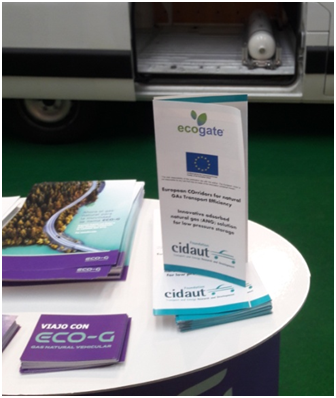
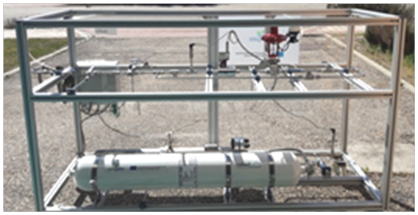
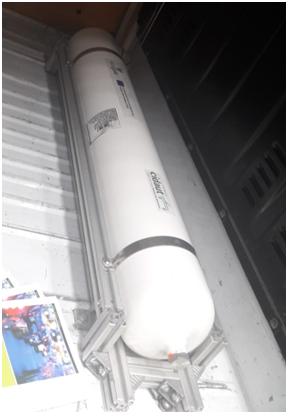
CIDAUT has carried out the characterization of the loading and unloading processes of this type of adsorbed natural gas storage systems in an experimental facility also developed within the scope of the ECO-GATE project.
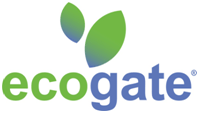

“The sole responsibility of this publication lies with the author. The European Union is not responsible for any use that may be made of the information contained therein.”
by cidaut | May 17, 2019 | Sin categoría
Last April, the NEOHIRE Consortium, formed by 10 partners, met at KOLEKTOR premises in Essen (Germany) to analyze the evolution of the project. Members of the Advisory Board and the Technical Monitor also were present at this meeting. The progress made so far in the project was presented to them and they gave their recommendations to continue the lines of research initiated.
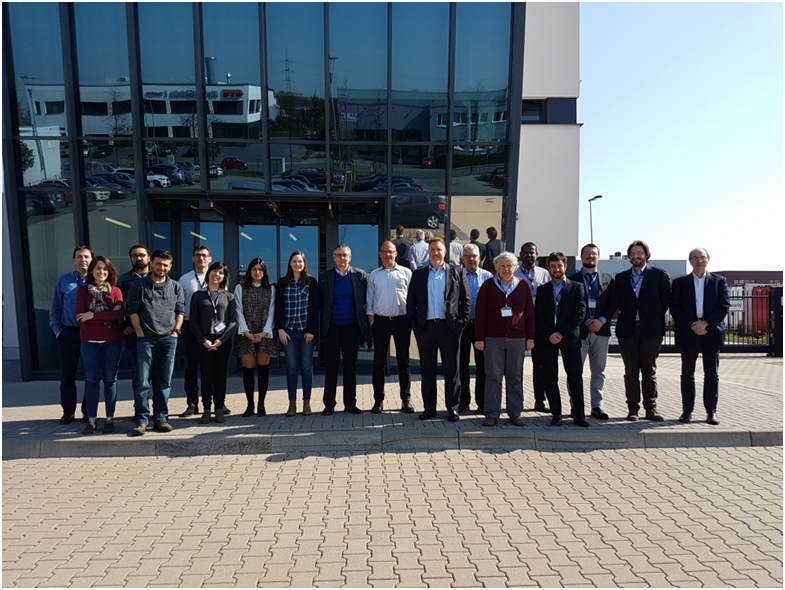
NEOHIRE aims to reduce the dependence on magnet material for the manufacture of electric motors and generators. In this scenario Cidaut presented the status of the Work Package 3 of the project, which is related to the design, modeling and simulation of a novel full-scale wind turbine generator using the magnets developed in the project.
For more information on NEOHIRE, please visit http://neohire.eu/
by cidaut | Mar 8, 2019 | Sin categoría
ARCADE (Aligning Research & Innovation for Connected and Automated Driving in Europe) is a Coordination and Support Action coordinated by Ertico under the Horizon 2020 Programme. The Consortium consists of 24 partners from 11 different countries. It is a 36 months project that started the 1st of October 2018.
ARCADE coordinates consensus-building across stakeholders for sound and harmonized deployment of Connected, Cooperative and Automated Driving (CAD).
ARCADE supports the commitment of the European Commission, the European Member States and the industry to develop a common approach to development, testing, validation and deployment of CAD in Europe and beyond.
The ARCADE project aims to establish a joint stakeholders forum in order to coordinate and harmonize automated road transport approaches at European (e.g. strategic alignment of national action plans for automated driving) and international level (in particular with the US and Japan). Towards this objective, ARCADE will organise the Second European CAD conference in 2019 and is open to associated partners beyond the confinements of the consortium.
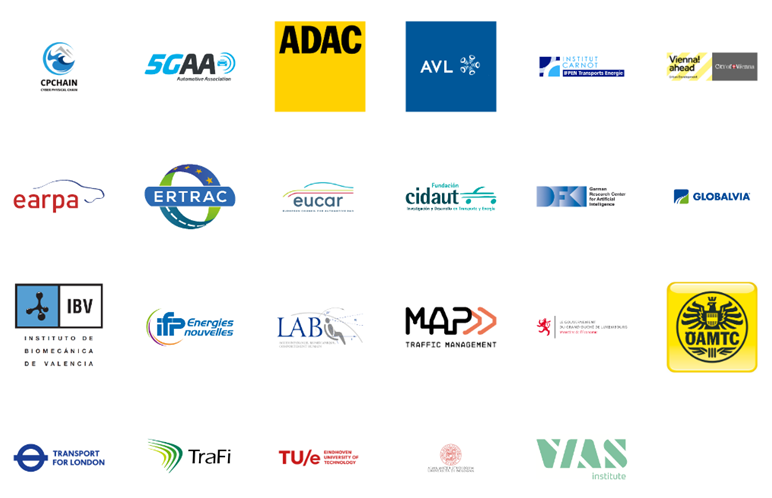 Associated partners of ARCADE Project
Associated partners of ARCADE Project
ARCADE objectives are:
- Cooperation between all CAD stakeholders(e.g. industry, research, member states, European Commission and international partners) from the different sectors (e.g. automotive, infrastructure, ICT and service provisions)
- Coordination of cooperation efforts between all programmes, initiatives and projects, including national and European research programmes as well international cooperation activities
- Exchange of knowledge, lessons andexperiences from past and ongoing activities at national, European and international level
- Consensus buildingon CAD deployment scenarios and research needs for connected and automated driving
by cidaut | Mar 8, 2019 | Sin categoría
The six partners of the Consortium (Cidaut, IFEVS, Belgian Welding Institute, Lulea Technical University, Magnetto Automotive and thinkstep) have met at thinstep’s facilities in Stuttgart to discuss about the evolution of the project. STEEL S4 EV aims at putting high strength steel at the forefront of a new trend in electric vehicles: light vehicles with three or four wheels that comply with crash regulation and with more restrictive Euro NCAP demands. Weld joint design and welding methodologies research to keep material properties along the joints assuring robustness and long term durability. To do this cost competitively low investment manufacturing will be achieved by a modular and flexible structural design: a complex 3D skeleton frame of welded tubes, bent with high accuracy using programmed laser cuts will enable different vehicles sharing the same tooling.
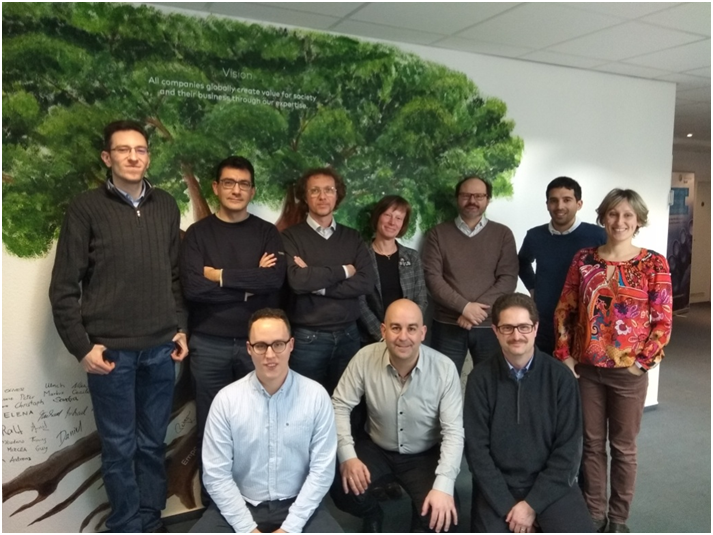 Representatives of the six partners involved in STEEL S4 EV project
Representatives of the six partners involved in STEEL S4 EV project
This is the First Steering Committee Meeting and it has been hold in the fifth month of the project. All the project activities are running in accordance to the timing. This time special attention has been paid to the input data needed for the Life Cycle Assessment.
by cidaut | Mar 8, 2019 | Sin categoría
The Safe Strip Consortium, formed by 18 partners, has met in Brussels with the Project Officer to analyze the evolution of the project. SAFE STRIP aims to introduce a disruptive technology that will achieve to embed C-ITS applications in existing road infrastructure, including novel I2V and V2I, as well as VMS/VSL functions into low-cost, integrated strips markers on the road; to make roads self-explanatory (with personalized in-vehicle messages) and forgiving (due to advanced cooperative functions) for all road users (trucks, cars and vulnerable road users, such as PTWs riders) and all vehicle generations (non-equipped, C-ITS equipped, autonomous), with reduced maintenance cost, full recyclability and added value services, as well as supporting real-time predictive road maintenance functions.
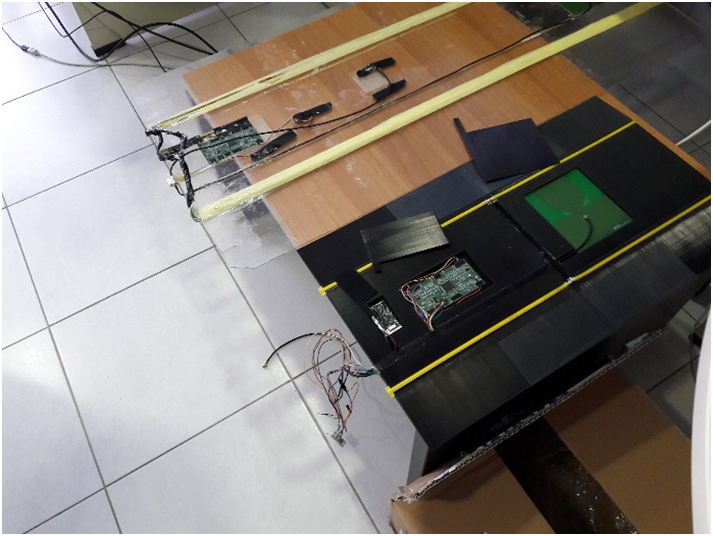 Different prototypes of the strips to be used in the user’s trials
Different prototypes of the strips to be used in the user’s trials
In this scenario Cidaut presented the status of the sixth Work Package of the project, which is related to the users’ trials that will get into the crucial phase of the project in several weeks. In this Work Package, the C-ITS applications will be tested by different users, with different driving profiles in order to understand how is the answer of different drivers to the applications developed during the project.
The review meeting was a good occasion to show the actual status of the prototypes of the strips that will be used along the users’ trials.
Page 6 of 25« First«...45678...20...»Last »











